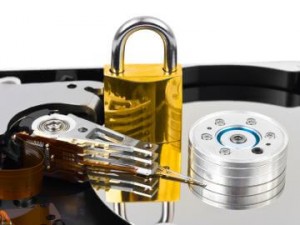Hard drives store data magnetically — the read/write heads float above platters, which are disks coated with a thin layer of magnetic material.
The actuator heads rely on magnetism, so it’s logical to wonder whether another magnet could interfere with read/write processes. The quick answer: Yes, but you’ll need a very powerful magnet. Here’s an overview.
Magnets can cause data loss, but household magnets are unlikely to impact hard drive performance.
 To cause data integrity issues on a modern hard drive without removing the platters, you’d need a magnet capable of subjecting a minimum of 450 pounds of force. Some neodymium fishing magnets have a pulling force of 450 pounds, but most household magnets don’t approach that number.
To cause data integrity issues on a modern hard drive without removing the platters, you’d need a magnet capable of subjecting a minimum of 450 pounds of force. Some neodymium fishing magnets have a pulling force of 450 pounds, but most household magnets don’t approach that number.
And depending on the hard drive’s make and model, 450 pounds may be low — particularly if the goal is data sanitization. Manufacturers have gradually improved hard drive areal density, and as density has increased, so has coercivity (coercivity measures a material’s ability to resist an external magnetic field without losing its magnetism).
If you removed the platters, you may be able to destroy data with a much less powerful magnet — but if you’re going through that trouble, you can simply physically destroy the platters.
This is not to say that you should play with magnets near a hard drive (or any other electronic device). Strong magnets could theoretically cause issues with the alignment of the read/write heads, and stronger magnets could potentially damage other computer components.
Professional data destruction firms sometimes use degaussers, which are powerful magnets designed to destroy magnetic data.
However, degaussing must be performed under controlled conditions. Datarecovery.com uses degaussers, shredders, and other equipment to securely destroy data — but we also check the media after degaussing to ensure that the process was successful.
My business has a degausser. Can I use it to sanitize hard drives?

Coercivity is measured in oresteds (symbol Oe). Some modern hard drives are rated at 5,000 Oe, while commercial degaussers may have a strength of 4,000 Oe or less.
To meet most data security standards, the degausser should have a strength of 2-3 times the oersted rating of the media. In other words, most standard degaussers are insufficient for treating hard drives.
Additionally, degaussers rely heavily on the correct positioning of the hard drive (or VHS tape, or other magnetic medium). It’s another reason to trust data professionals for large-scale data sanitization projects: A minor mistake could compromise sensitive data.
To discuss data sanitization — or hard drive data recovery solutions — call 1-800-237-4200 to connect with an expert or submit a case online.





